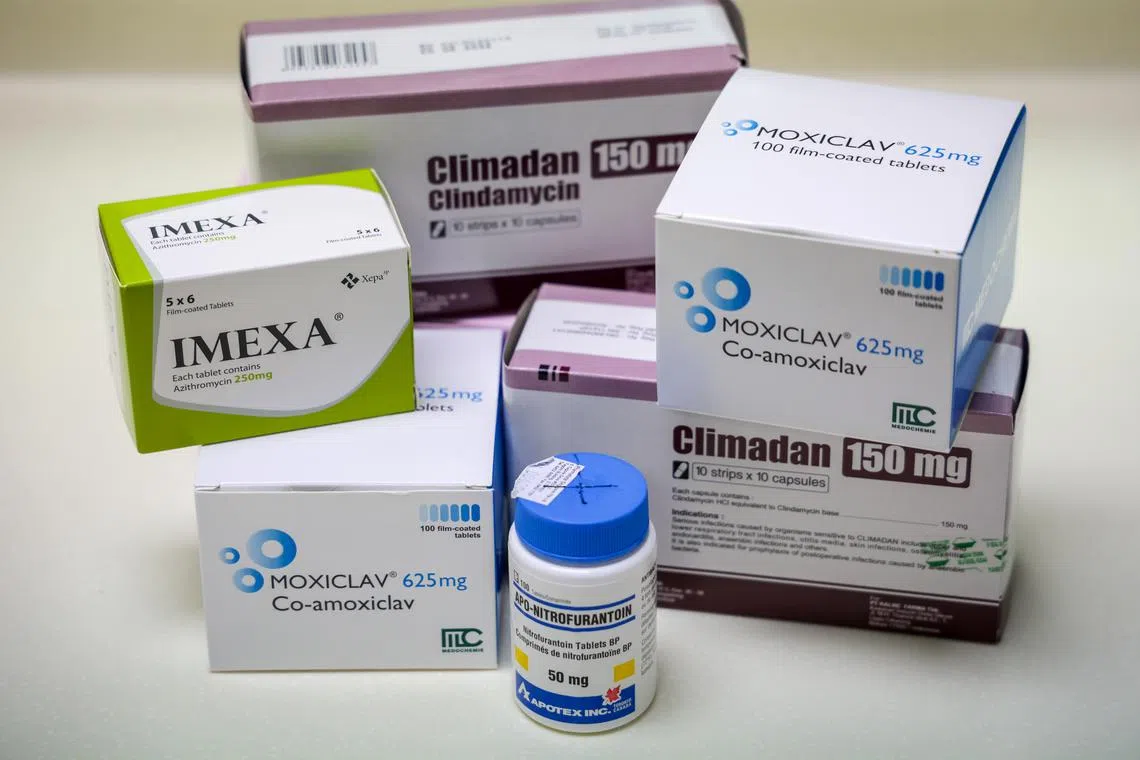Overprescription of antibiotics? New study aims to guide their use in primary care settings
Sign up now: Get ST's newsletters delivered to your inbox

The NUP study is part of a bid to fight antimicrobial resistance – caused in large by overuse of antibiotics – in primary care settings.
PHOTO: LIANHE ZAOBAO
Follow topic:
SINGAPORE – Prescribing both oral and topical antibiotics for skin conditions during the same visit is discouraged, but a study has discovered an increase in instances of this practice, among other findings.
The dual prescription is discouraged due to a possible higher risk of antimicrobial resistance, which occurs when micro-organisms such as bacteria no longer respond to antibiotics, caused in large part by their overuse.
The study by National University Polyclinics (NUP), which was published in medical journal Antibiotics in April, aims to help guide the use of antibiotics here.
It is part of a bid to fight antimicrobial resistance in primary care settings. In Singapore, primary care is provided in polyclinics and clinics run by general practitioners.
Antimicrobial resistance has been identified by the World Health Organisation as one of the top 10 global health threats.
The study looked at antibiotic prescriptions for adult patients at six NUP polyclinics between 2018 and 2021, drawing data from 3.2 million outpatient consultations during that time to identify prescription patterns and areas for improvement.
It found that the most common conditions receiving oral antibiotic prescriptions were those relating to skin and soft tissue, comprising 37.7 per cent of such prescriptions.
Though prescribing both oral and topical antibiotics for skin conditions during the same visit is discouraged, the study noted a growing number of such dual prescriptions, making up 35.8 per cent of antibiotic prescriptions.
Cases of antibiotics given for respiratory infections, which previously made up the largest number, fell from 40.6 per cent of all antibiotic prescriptions in 2018 to 10.8 per cent in 2021, which was attributed to public health measures introduced to stop the spread of Covid-19.
The study also found the percentage of antibiotic prescriptions with undefined diagnoses had increased from 10.8 per cent to 17.2 per cent of all cases.
One of the study’s authors, NUP family physician Sky Koh, noted that doctors may not have documented the diagnosis for patients with chronic conditions who are prescribed antibiotics, leading to a gap in information.
“That may make it difficult for us to determine what the antibiotics are actually prescribed for,” he said, noting that it was thus hard to ascertain the appropriateness of the prescription.
Following the publishing of the findings, NUP will establish an outpatient antimicrobial stewardship programme to oversee the prescription of antibiotics.
The study is part of a larger group of studies looking at antimicrobial resistance here, supported by the National Medical Research Council and involving other institutions such as the National Centre for Infectious Diseases and the Singapore General Hospital.
Dr Koh, who is also a family medicine lecturer with the Yong Loo Lin School of Medicine at the National University of Singapore, will next focus on the use of antibiotics in treating skin and genito-urinary conditions, as well as among children.
Such studies can help in drawing up guidelines on the use of antibiotics in primary care here, he added.
“We need to reduce the use of antibiotics but increase their appropriateness,” he said.

